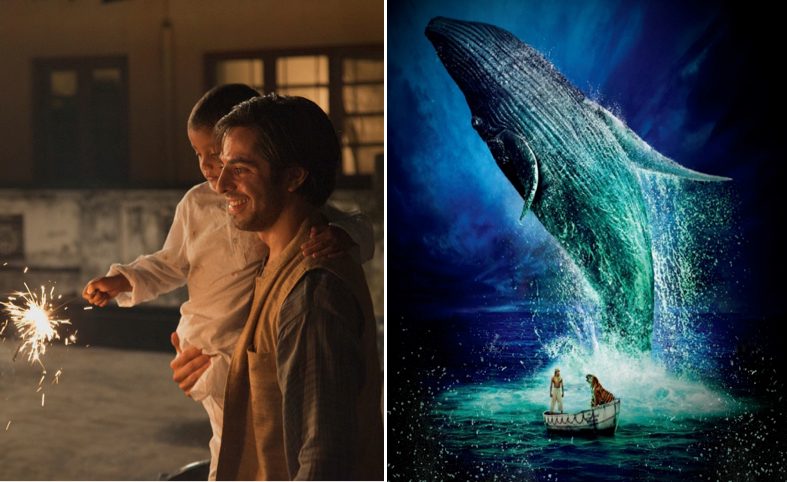Showing @ Filmhouse, Edinburgh until Thu 31 Jan
Ang Lee / USA/China/Taiwan / 2012 / 127 min
Showing @ Filmhouse, Edinburgh until Wed 09 Jan
Deepa Mehta / Canada/UK / 2012 / 146 min
Gaining 11 Oscar nominations Ang Lee’s Life of Pi is one of the forerunners of the 2013 Academy Awards. With that comes publicity, profile, money and acclaim. With a season of must-sees it’s easy to ignore more modest works, such as Deepa Mehta’s Midnight’s Children and perhaps easier to not realise what we’re missing outside of the Hollywood canon. The two cinematic translations of two Man Booker Prize winning novels blend fantasy with reality and loss with survival in the journeys of their young adolescent male protagonists. Although themes overlap and the stories are fairly similar, the cinematic recreations are vastly different.
Adapted from Salman Rushdie’s novel by the writer himself, Midnight’s Children is the tale of a boy, Saleem Sinai (Satya Bhabha) with a blocked nose that finds himself caught up in the transition of India from British colony into independent nation. Switched with another baby boy at birth, the search for identity and rebellion against conformity to societal structures sits at the heart of the story. In Canadian Yann Martell’s novel, the character Pi (Suraj Sharma) is caught in a thunderstorm in the Pacific Ocean on his way from India to Canada with his family. He is the sole survivor and makes the rest of his journey with Richard Parker, a carnivorous Bengal tiger. Whether his journey was a miracle or simply an allegory is never resolved.
Fundamentally, the differences between to the two come down to the way the stories are told: Ang Lee’s film is (unsurprisingly) beautiful, slow and reflective. Lee turns a turbulent disaster into intricate imagery and a camera that captures the rocking movement of the seas sets the rhythm. Rushdie’s blend of historical fiction and magic realism makes for a vivid and visceral film that isn’t afraid of gritty, brutal scenes. Firmly rooted in the mid 1900s, the story covers four generations of a family and an almost episodic structure gives it steady pace and progression. Mehta’s film is somewhat simple, relying on the storytelling to do most of the work and rightly so; Rushdie’s dense and complex novel need not rely on anything else to make its point. In this case, less is more. The human condition and the need to survive make compelling viewing, and it’s doubtful that budgets, publicity and special effects will enhance that experience greatly.
Arguably, what has let Life of Pi down is the marketing campaign: while it may have succeeded in creating hype and receiving recognition, almost all of the really interesting moments – visually and plot-wise – are shown in the trailer, which has been showing in cinemas for months. Still, Lee’s spectacle has reason to boast: both the visual and sound effects are sophisticated and the 3D is used to its full potential. Both films tackle the divide between East and West, colonialism, independence and the discovery of individual and national identity. Lee’s film succeeds in making an aesthetic, timeless, universal blockbuster, however, Mehta’s aggressive, confrontational film is edgier, and gives back much more than the time invested watching. Unlike many other genres and themes, cinematic exploration of the depths of human existence cannot be validated by award nominations or successes; we’re far too intelligent a species for that.
Follow Emma on Twitter @emmalhay
